Understanding Moisture-Wicking Fabrics
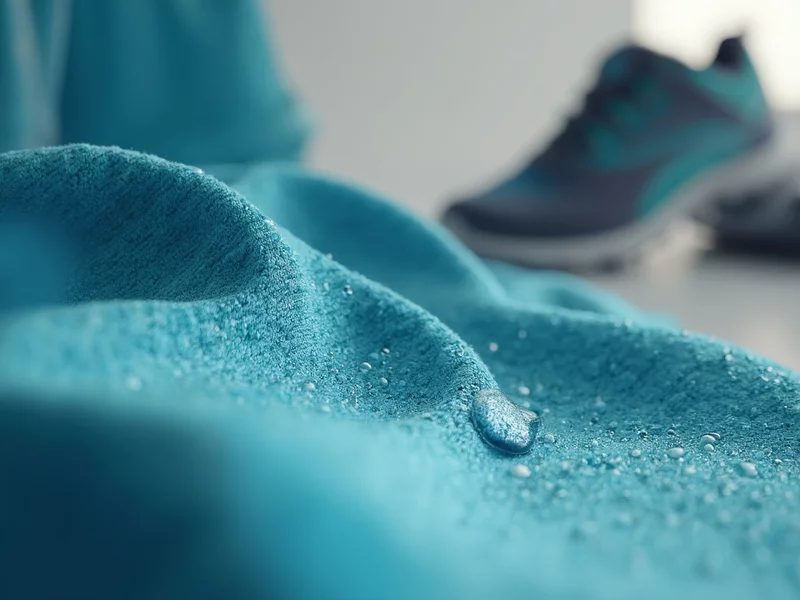
As you prepare for your next outdoor activity, consider this: the right fabric can be the difference between a comfortable experience and a painful one. Understanding moisture-wicking fabrics and their benefits not only enhances your performance but also helps prevent chafing. Let’s explore the key insights that will keep you moving without discomfort!
What You Will Learn
- Moisture-wicking fabrics effectively manage sweat by pulling moisture away from the skin and allowing it to evaporate quickly.
- Common materials include polyester and nylon, each offering unique benefits for athletes and outdoor enthusiasts.
- Understanding hydrophobic and hydrophilic properties in fabrics is key to choosing gear that prevents moisture accumulation and chafing.
- Incorporating spandex into performance fabrics enhances flexibility, reducing friction and the risk of chafing during high-impact activities.
- Choosing seamless garments can significantly minimize friction points, providing a smoother fit and greater comfort.
Comparison of Fabric Properties and Chafing Factors
This visual highlights the key characteristics of moisture-wicking fabrics and the primary causes of chafing, along with their respective prevention strategies.
Moisture-Wicking Fabric (Key Properties)
Polyester
Lightweight, quick-drying, resistant to stretching and shrinking. Durable.
Nylon
More durable, often softer. Strong with good elasticity. Dries slower than polyester.
Spandex
Provides excellent stretchability, minimizes friction from tight clothing. Improves flexibility.
Capillary Action
Microscopic channels draw moisture away. Hydrophobic outer layer for quick evaporation.
Chafing: Causes & Prevention (Key Factors)
Causes
- Moisture (Sweat accumulation)
- Friction (Skin/clothing rub)
- Heat buildup
- Poor-fitting/rough clothing
Prevention Strategies
- Moisture-wicking fabrics
- Seamless garments
- Anti-chafing creams/balms
- Properly fitting apparel
Understanding Moisture-Wicking Fabrics and Their Role in Chafing Prevention
As someone who actively promotes comfort and performance in everyday wear, I can't stress enough the importance of moisture-wicking fabrics in your active lifestyle. They are specifically designed to manage sweat, keeping you dry and comfortable during even the most intense activities. So, what exactly are these miracle fabrics, and how do they help in preventing chafing?
Moisture-wicking fabrics are made to pull moisture away from your body and distribute it across the fabric's surface. This quick-drying capability keeps your skin dry, significantly reducing the chance of chafing. Let's dive deeper into what makes these fabrics essential for athletes and outdoor enthusiasts alike!
What Are Moisture-Wicking Fabrics?
Moisture-wicking fabrics are typically made from synthetic materials that possess special properties to manage moisture effectively. These include polyester, nylon, and blends that enhance both comfort and performance. They work by drawing sweat away from your skin and allowing it to evaporate quickly, rather than soaking into the fabric.
- Polyester: Commonly used due to its durability and moisture-wicking abilities.
- Nylon: Known for its strength and elasticity, offering a snug fit.
- Blends: Often combine the benefits of different materials for optimal performance.
At Comfort Wear Australia, we understand that choosing the right fabric is crucial for preventing discomfort during your activities. That's why we emphasize moisture-wicking materials in our product offerings. These fabrics not only enhance your performance but also support your active lifestyle!
How Moisture-Wicking Technology Works to Manage Sweat
The technology behind moisture-wicking fabrics is fascinating! It revolves around the concept of capillary action, which allows these fabrics to draw moisture away from the skin. When you sweat, the moisture travels through the fibers and spreads out, enabling it to evaporate quickly. This process is vital for maintaining a comfortable temperature and reducing friction.
The Science Behind Capillary Action and Fiber Structure
Capillary action occurs when liquid moves through narrow spaces without the assistance of external forces. In moisture-wicking fabrics, the fiber structure is designed to promote this movement. The microscopic channels in the fabric help efficiently transport moisture away from your skin, keeping you dry during your runs or outdoor adventures. Research further details the intricate mechanisms of textile-based sweat management systems, emphasizing their role in high-performance apparel.
Comparison of Synthetic Fibers: Polyester vs. Nylon
When comparing polyester and nylon, both fabrics have their unique advantages:
- Polyester: Lightweight, quick-drying, and resistant to stretching and shrinking.
- Nylon: Offers more durability and is often softer against the skin, but may not dry as quickly.
Ultimately, the choice between polyester and nylon will depend on your specific needs, but understanding their characteristics can help you make an informed decision!
The Benefits of Spandex in Performance Fabrics
Incorporating spandex into performance fabrics is another game-changer! Spandex provides excellent stretchability, allowing your gear to move with you rather than against you. This flexibility is crucial during high-impact activities, as it minimizes the risk of chafing caused by tight or restrictive clothing.
Understanding Hydrophobic and Hydrophilic Properties in Fabrics
Fabrics can either be hydrophobic (repelling water) or hydrophilic (absorbing water). Moisture-wicking fabrics are typically hydrophobic on the outer layer to prevent moisture absorption. This means that sweat is quickly transported to the outer layer, where it can evaporate. By choosing garments with these properties, you’re setting yourself up for success in keeping irritation at bay! Further information on smart textiles for moisture management highlights how these material properties are engineered for optimal comfort.
So now that you have a good grasp of moisture-wicking fabrics and their benefits, you can see why they are essential in preventing chafing during your activities. At Comfort Wear Australia, we are dedicated to helping you find the perfect moisture-wicking solutions to keep you comfortable and focused on your performance!
Pro Tip
To maximize the benefits of moisture-wicking fabrics, consider layering your clothing. Start with a moisture-wicking base layer to keep sweat at bay, followed by insulating layers for warmth. This way, you can maintain comfort and reduce the risk of chafing during any activity, whether it's a chilly morning run or an intense workout session!
Chafing: Causes, Symptoms, and Prevention Strategies
As an active individual, understanding chafing is crucial for your comfort during workouts or outdoor activities. Chafing can occur in various parts of the body, primarily where skin rubs against skin or clothing, leading to irritation. Whether you’re hitting the trails or running errands, recognizing what triggers chafing can help you take proactive measures.
Many athletes experience discomfort from chafing, especially during long bouts of physical activity. It's essential to pay attention to the signs, which can include redness, burning sensation, or even skin abrasions. Luckily, there are strategies to combat this pesky issue, ensuring you stay focused on your performance and not on irritation!
What Causes Chafing in Athletes?
Chafing is often caused by a combination of moisture, friction, and heat. When your skin rubs against itself or your clothing, it can lead to painful rashes. Here are some common causes:
- Excessive sweating, leading to moisture accumulation
- Rough seams or poor-fitting clothing
- Prolonged physical activity without sufficient breaks
- Inappropriate fabric choices that don’t wick moisture
To avoid chafing, it's crucial to choose the right apparel. At Comfort Wear Australia, we recommend moisture-wicking fabrics that reduce friction during your activities. Remember that investing in high-quality gear can significantly enhance your comfort!
How Moisture Management Helps Reduce Friction
Managing moisture effectively is vital for reducing friction and preventing chafing. When your skin stays dry, the risk of irritation diminishes significantly. Here's how moisture management contributes:
- It keeps your skin cool and dry, limiting sweat accumulation.
- Reduces the heat build-up that can exacerbate friction.
- Enhances overall comfort, allowing you to focus on your performance.
By choosing the right athletic wear, you can maintain optimal moisture levels, which will help you perform at your best. Quality moisture-wicking fabrics, like those offered at Comfort Wear Australia, ensure that you stay dry and chafe-free!
Impact of Dryness on Skin Health and Athletic Performance
Maintaining dryness is essential not just for comfort but also for your skin's health. When skin stays dry, it remains intact and is less likely to suffer from abrasions or irritations. Moreover, your athletic performance can improve! Athletes who prioritize moisture management often report enhanced stamina and fewer distractions caused by discomfort.
Inadequate moisture management can lead to more than just chafing; it can cause long-term skin damage. Protect your skin by investing in quality gear that works with your body!
Recommended Anti-Chafing Products and Skin Care Tips
When it comes to preventing chafing, a combination of the right clothing and effective skincare can make all the difference. Here are some products and tips to consider:
- Anti-chafing creams or balms that form a protective barrier on the skin.
- Moisture-wicking underwear that offers support without bulk.
- Seamless garments to minimize friction points.
- Regularly applying lotion or creams to keep your skin hydrated.
By incorporating these strategies into your routine, you’ll be well on your way to enjoying your activities without the nagging worry of chafing!
Exploring Seamless Garments and Their Role in Friction Reduction
Seamless garments are gaining popularity among athletes for a good reason—they significantly reduce friction points. By eliminating seams, these garments provide a smoother fit, ensuring that you can move freely without the risk of skin irritation. At Comfort Wear Australia, we advocate for seamless designs as part of our commitment to comfort and performance. The benefits of seamless compression sportswear are further explored in scientific literature, confirming their effectiveness in reducing friction and enhancing comfort.
Trying out seamless options can be a game-changer for your athletic wardrobe. With fewer seams to rub against your skin, you can experience your workouts with newfound confidence!
Frequently Asked Questions (FAQs)
- What are moisture-wicking fabrics?
- Moisture-wicking fabrics are synthetic materials like polyester and nylon designed to pull sweat away from your skin and spread it across the fabric's surface for quick evaporation, keeping you dry and comfortable.
- How does moisture-wicking technology prevent chafing?
- By keeping your skin dry, moisture-wicking fabrics reduce the moisture and friction that primarily cause chafing. The quick evaporation prevents sweat accumulation and heat buildup.
- What is capillary action in fabrics?
- Capillary action is the process by which moisture-wicking fabrics draw liquid (sweat) through microscopic channels within their fibers, moving it away from the skin to the outer surface for evaporation.
- What are the differences between polyester and nylon for activewear?
- Polyester is lightweight, quick-drying, and resistant to stretching. Nylon is more durable, often softer, and has good elasticity, though it may dry slower than polyester. Both are effective moisture-wickers.
- Why is spandex beneficial in performance fabrics?
- Spandex provides excellent stretchability, allowing garments to move with your body. This flexibility minimizes friction and the risk of chafing, especially during high-impact activities.
- How do hydrophobic and hydrophilic properties relate to moisture-wicking?
- Moisture-wicking fabrics are typically designed with a hydrophobic outer layer, meaning it repels water. This prevents the fabric from absorbing sweat, instead allowing it to quickly transfer and evaporate from the surface.
- What are common causes of chafing?
- Chafing is usually caused by a combination of moisture (sweat), friction (skin-on-skin or skin-on-clothing rub), heat buildup, and poor-fitting or rough apparel.
- What are some effective strategies to prevent chafing?
- Prevention strategies include wearing moisture-wicking fabrics, choosing seamless garments, using anti-chafing creams or balms, and opting for properly fitting athletic apparel.
Recap of Key Points
Here is a quick recap of the important points discussed in the article:
- Moisture-Wicking Fabrics: Essential for managing sweat and preventing chafing, made from materials like polyester, nylon, and blends.
- Capillary Action: This technology enables fabrics to draw moisture away from the skin via microscopic channels, keeping you dry.
- Choosing the Right Fabric: Understand the differences between polyester and nylon, and consider how spandex can enhance the flexibility of your activewear.
- Prevention Strategies: Invest in high-quality moisture-wicking apparel and anti-chafing products to reduce friction and irritation during activities.
- Seamless Garments: Consider seamless designs to minimize friction points and enhance comfort during workouts.
Popular Posts
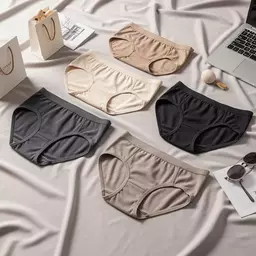 As you embark on your next active adventure, consider this: the right underwear can significantly el
As you embark on your next active adventure, consider this: the right underwear can significantly el
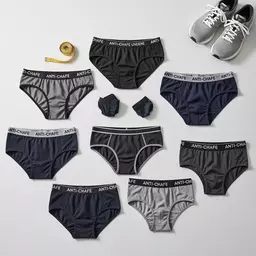 Have you ever experienced the discomfort of chafing during your favorite outdoor activity? The right
Have you ever experienced the discomfort of chafing during your favorite outdoor activity? The right
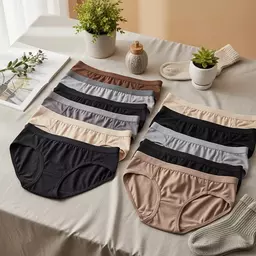 As you gear up for your next outdoor adventure, have you ever wondered how to keep irritation at bay
As you gear up for your next outdoor adventure, have you ever wondered how to keep irritation at bay
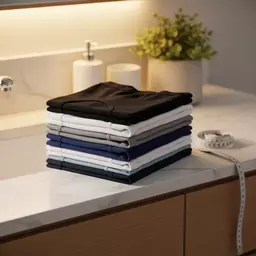 Have you ever considered how the care of your underwear can influence your comfort? Proper maintenan
Have you ever considered how the care of your underwear can influence your comfort? Proper maintenan
